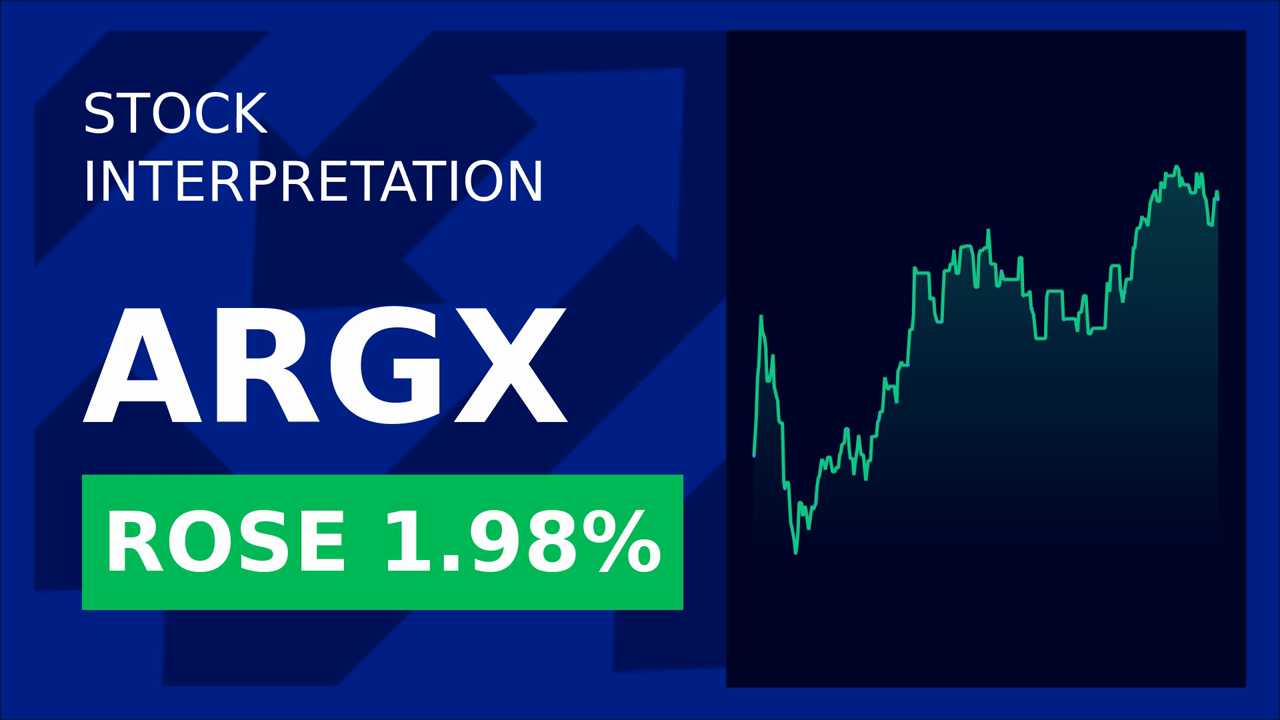Argenx's Q1 Surge Masks Pipeline Uncertainties as Shares Plunge Post-Earnings
Argenx SE (NASDAQ: ARGX) reported a landmark quarter on May 8, 2025, with $790 million in global product sales, a 99% year-over-year surge, and its first-ever net profit of $169.5 million ($2.78 per share). Despite these achievements, the stock plummeted over 10% pre-market, signaling investor skepticism about the company’s ability to sustain growth beyond its flagship product, VYVGART. The decline underscores a broader tension between Argenx’s near-term execution and long-term pipeline risks.
Ask Aime: What's behind Argenx's earnings surge and stock dip?

Q1 2025 Financial Highlights: A Turning Point?
Argenx’s Q1 results marked a pivotal shift toward profitability, driven by robust demand for VYVGART, its FDA-approved therapy for generalized myasthenia gravis (gMG), chronic inflammatory demyelinating polyneuropathy (CIDP), and primary immune thrombocytopenia (ITP). Key metrics include:
- Operating income of $807 million, up from $413 million in Q1 2024.
- R&D expenses rose 37% YoY to $309 million, reflecting investments in expanding clinical trials for autoimmune therapies.
- SG&A costs increased 17% to $276 million, as the company scales commercial operations.
The company reaffirmed its $2.5 billion annual R&D/SG&A guidance, signaling confidence in balancing growth with fiscal discipline. However, investors focused on the $668 million in total operating expenses, which outpaced net income, raising concerns about cash utilization.
Ask Aime: What's next for Argenx after a strong Q1 2025?
Pipeline Momentum and Strategic Ambitions
Argenx highlighted progress across its 20 ongoing studies (10 registrational, 10 proof-of-concept) and its Vision 2030 strategy, which aims to treat 50,000 patients across 10 indications by 2030. Key pipeline updates include:
- VYVGART-SC: A subcutaneous formulation approved in the U.S. and Germany, with a pending EU CHMP opinion for CIDP.
- Efgartigimod: Expanding into thyroid eye disease (TED), myositis, and Sjögren’s syndrome, with Phase 3 data expected in late 2026.
- Empasiprubart: Advancing in multifocal motor neuropathy (MMN) and CIDP, with Phase 3 results due in late 2026.
- ARGX-119: Exploring ALS and spinal muscular atrophy (SMA), with Phase 1b/2a data anticipated in 2025–2026.
The company also unveiled four new pipeline candidates under its Immunology Innovation Program (IIP), including ARGX-109 (IL-6 targeting) and ARGX-213 (FcRn inhibition), with Phase 1 results expected late 2025.
Ask Aime: "Is Argenx's first quarter profit a signal for future growth?"
Why the Stock Slumped: Risks Overshadowing Growth
Despite the positive metrics, the market’s reaction revealed deep-seated concerns:
1. Pipeline Dependency and Execution Risks
While the pipeline is broad, many programs remain in early stages, with critical data readouts not expected until 2026–2027. Investors may have discounted the potential of programs like thyroid eye disease (UplightTED trials) or myositis (ALKIVIA trials), which are years away from commercialization. The lack of near-term catalysts, such as a U.S. approval for the pre-filled syringe (PDUFA decision April 10, 2025), may have disappointed those seeking immediate upside.
2. High Costs and Profitability Volatility
The 37% YoY rise in R&D expenses to $309 million and $276 million in SG&A costs raised red flags. While the company achieved profitability in Q1, this was partially offset by $27 million in exchange gains and $33 million in income tax expenses—factors less tied to core operations. Sustaining profits will require further sales growth or pipeline validation, which hinges on unproven trials.
3. Vision 2030 Skepticism
The 50,000-patient target by 2030 assumes successful execution of 10 registrational studies, regulatory approvals in multiple markets, and reimbursement agreements. The company’s current $790 million in sales (with 99% tied to VYVGART) highlights its dependence on a single product. Diversifying revenue streams will require breakthroughs in pipeline programs, which face $2.5 billion in annual R&D/Sales expenses—a daunting task.
4. Competitive Landscape and Regulatory Hurdles
VYVGART’s subcutaneous formulation faces competition from established therapies like IVIG and emerging biologics. Regulatory approvals in Japan and Canada (expected by late 2025) are critical for geographic expansion, but delays could limit growth. Meanwhile, empasiprubart’s progress in MMN and CIDP relies on demonstrating superiority over existing treatments.
Conclusion: A High-Reward, High-Risk Gamble
Argenx’s Q1 results reflect a company at a crossroads. On one hand, its commercial success with VYVGART and disciplined financial management justify optimism. On the other, the pipeline’s reliance on distant data readouts and elevated expenses create execution risks that spooked investors.
The stock’s decline suggests the market is demanding immediate catalysts, such as the April 2025 PDUFA decision for the VYVGART pre-filled syringe or 2025 Phase 4 CIDP switch study results, to offset long-term uncertainty. If Argenx can deliver on these milestones while containing costs, it may regain investor confidence. However, the path to Vision 2030 is fraught with hurdles, including $309 million in quarterly R&D outlays and 10+ late-stage trials requiring success.
For now, Argenx remains a high-beta play for investors willing to bet on its autoimmune pipeline. With $3.4 billion in cash (as of Q3 2024) and a profitable quarter under its belt, the company has the resources to pursue its ambitious goals. Yet, until the pipeline delivers clear wins, skepticism will linger—making the stock a roller-coaster ride for shareholders.

_f86da1b01749674376692.jpeg)








